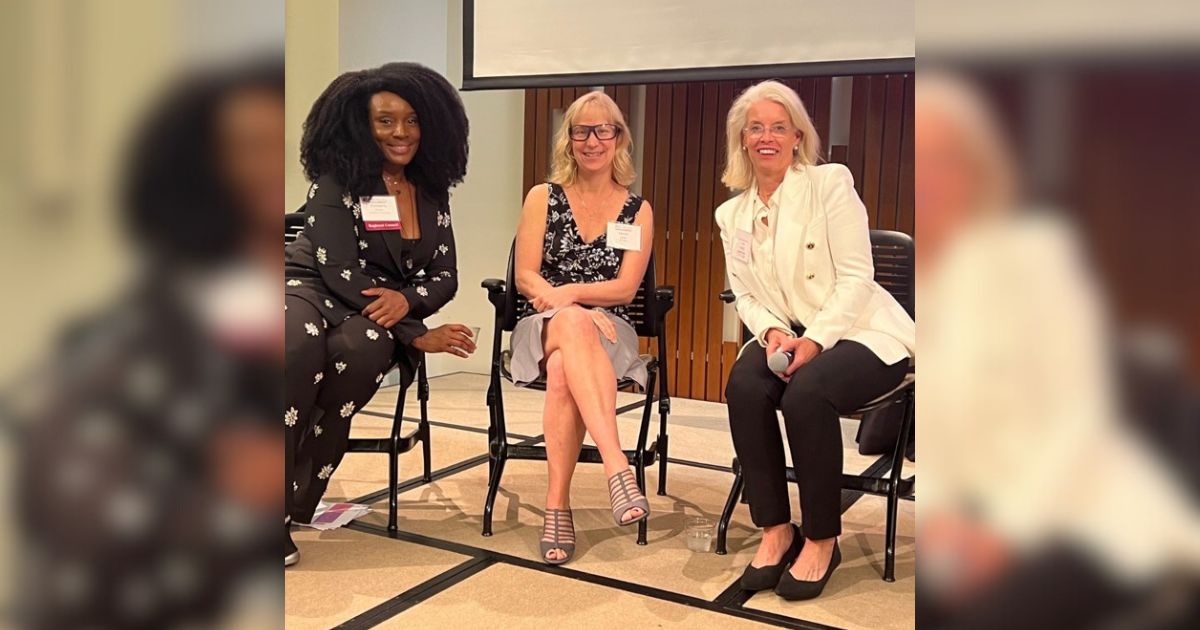Inforum Center for Leadership recently released its tenth-anniversary Michigan Women’s Leadership Index, a snapshot of the leadership role of women in Michigan’s top one hundred public companies.
Wayne State School of Business Administration conducted the research for the 2013 report, which also looks back on the decade since it was first published in 2003.
“A decade of research reveals little change for women in the highest ranks of leadership in Michigan’s top one hundred public companies,” said Terry A. Barclay, president and CEO of Inforum and Inforum Center for Leadership. “Our goal in publishing this report is to bring greater awareness to the business risk of untapped talent and to identify specific strategies for change.”
Today, women make up forty-seven percent of the U.S. labor force and earn the majority of bachelor’s and master’s degrees. Top findings of the Michigan Women’s Leadership Index include:
In the past decade, little has changed for women in the highest leadership ranks in Michigan’s top one hundred public companies. Since Inforum began tracking in 2003, women have been underrepresented in Michigan’s boardrooms and executive suites. In 2013, 11.6 percent of directors are women, up from 9.6 percent in 2003—an increase of two percentage points. In 2013, 12.6 percent of executive officers are women, up from 11.6 percent in 2007—an increase of one percentage point. In 2013, 9.6 percent of top-five compensated officers were women, up from 7.1 percent in 2003—an increase of 2.5 percentage points.
The progression of women in Michigan’s sixteen Fortune 500 companies reflects the trend for all Fortune 500 companies nationally. The percentage of women directors and top-compensated officers both in Michigan and the U.S. has remained relatively unchanged since 2011. The percentage of women executive officers has declined—three percentage points nationally and 3.9 percentage points in Michigan.
Forty-six new directors were elected to the boards of Michigan’s top 100 public companies in a recent eighteen-month period; seventy-six percent (thirty-five new directors) were men. New male directors ranged in age from thirty-two to seventy (a thirty-eight-year span), whereas new female appointees ranged in age from forty-eight to fifty-four (a six-year span).
Nine of Michigan’s top one hundred public companies have three or four women directors, achieving “critical mass” in the boardroom. Eastern Michigan Financial Corporation, General Motors, Kelly Services, Spartan Stores, and Steelcase each have four women directors; DTE Energy, Herman Miller, Kellogg Company, and Perrigo each have three women directors.Of these nine companies, four (Herman Miller, Kellogg Company, Spartan Stores, Steelcase) have elected an additional woman director since 2011.
“While gains are being made in the classroom, the boardroom and executive suites lag behind,” said Margaret L. Williams, dean, School of Business Administration, Wayne State University. “The data demonstrate a slow progress for women at the highest levels of our state’s top public companies.”
The report’s findings point to three strategies companies can take to change the current landscape for women in the highest ranks of leadership as corporate directors, executive officers, and top-five compensated officers:
- Take advantage of board vacancies to diversify board composition, and cast a wider net for nominees. Vacancies and new board seats provide an ideal time for companies to address diversity by casting a wide net in sourcing and selecting qualified candidates, including women.
- Encourage women in your own company to serve on the board of another company. The impressive experience and characteristics of the executive officers currently employed by Michigan’s Fortune 500 and Tier II companies make them a promising pool of director talent for smaller Michigan firms, top one hundred or otherwise.
- Challenge the status quo during talent reviews to broaden the search for “potential.” It is more important than ever to have the discipline and processes to look beyond the visible “superstars” that have already begun to prove themselves with high-profile assignments or top-client interaction. This is necessary because those with genuine potential may never be put into these roles, given the effects of unconscious bias on the way assignments are given and promotional opportunities created.
Click here for more information.
Source: Inforum




